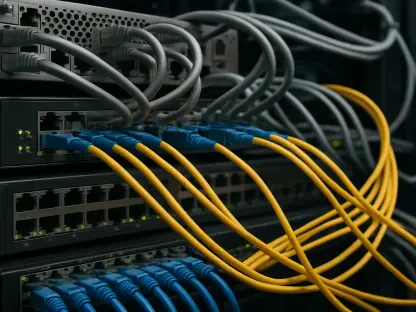The contemporary cybersecurity landscape is rapidly changing, driven by the evolving tactics of increasingly sophisticated cybercriminals working tirelessly to exploit and infiltrate systems. With the hybrid and remote work models now commonplace, these shifts have exposed new vulnerabilities within cybersecurity frameworks, introducing challenges that must be addressed promptly and effectively.
The Browser as a Primary Weak Link
In the current landscape of hybrid and remote work configurations, browsers have become the primary weak link in cybersecurity due to insufficient security controls. This shift has led to significant challenges in managing both managed and unmanaged devices, particularly in the Asia Pacific (APAC) region. As organizations and employees rely more on browser-based interactions, they inadvertently widen the attack surface, providing cybercriminals with numerous entry points for exploitation.
Effective security strategies must address the visibility gaps presented by this mix of devices and the surge in SaaS application usage. These issues compromise the ability to detect and thwart security threats effectively. Traditional security measures often lack the advanced capabilities needed to cope with these new challenges, making it critical to adopt solutions that offer comprehensive protection. Organizations must prioritize deploying enterprise-grade browsers and centralizing security management to achieve this level of protection. Furthermore, incorporating tools that can prevent malware and data loss is essential to safeguard against potential breaches.
Moreover, enhancing browser security involves treating browsers as critical security control points. By doing so, businesses can mitigate risks associated with phishing, malicious redirects, and unnoticed malware downloads. Regular updates and patches should be applied to browsers to ensure they remain resilient against evolving threats. Additionally, raising awareness among employees about safe browsing practices can significantly reduce the likelihood of successful attacks, thereby strengthening the overall security posture of an organization.
The Role of AI in Evolving Threat Dynamics
As threat actors integrate AI into their campaigns, the landscape of cyberattacks is profoundly transformed. Automation and sophisticated hacker toolkits have led to rapid and elusive attacks that exploit vulnerabilities with alarming efficiency. In a recent report by Unit 42 Palo Alto Networks, it was found that data exfiltration happens within an hour in nearly twenty percent of cases, underscoring the speed at which these attacks can occur.
The capabilities of AI extend to automating attack campaigns, developing polymorphic malware, and enhancing the effectiveness of phishing attacks. AI’s proficiency in crafting convincing phishing emails results in a higher success rate, making it more challenging for individuals to distinguish between legitimate and malicious communications. This advanced level of sophistication allows cybercriminals to execute targeted attacks with precision, increasing the risk to organizations.
Adaptive AI models have also been employed to explore and exploit system vulnerabilities continuously. These models can learn from previous attempts and adapt their strategies to bypass security measures. Consequently, organizations must leverage AI-powered security tools to stay ahead of these evolving threats. Real-time threat detection, behavioral analysis, and automated responses are crucial in identifying and mitigating incidents before they escalate into significant breaches. By harnessing the power of AI, businesses can enhance their ability to defend against the dynamic and evolving tactics of cybercriminals.
Transition from Ransomware to Business Disruption
Cybercriminals are shifting their tactics from traditional ransomware and data theft to methods focused on business disruption. As cybersecurity measures improve, these threat actors have adopted multi-extortion techniques, causing significant operational downtime, reputational damage, and financial losses. Recent analyses revealed that eighty percent of incidents result in impact-related losses, highlighting the effectiveness of these disruptive tactics.
This transition signifies that cybercriminals are no longer content with simply encrypting data for ransom. Instead, they seek to maximize damage by targeting critical business functions and operations. Multi-front attacks have become more prevalent, where cybercriminals launch coordinated efforts to compromise various aspects of an organization simultaneously. This approach enables them to create widespread chaos, making it difficult for businesses to recover quickly.
Given the increasing sophistication of these attacks, it is imperative for organizations to adopt a comprehensive and proactive approach to cybersecurity. This involves implementing measures that focus on preventing and mitigating disruptions to business operations. Strategies such as network segmentation, redundancy planning, and incident response simulations can help prepare organizations for potential attacks and minimize downtime. Moreover, fostering a culture of cyber resilience among employees ensures that everyone is prepared to respond promptly and effectively to security incidents, reducing the overall impact on the organization.
The Human Factor in Cybersecurity
Employees remain one of the most vulnerable aspects of an organization’s cybersecurity, often falling prey to sophisticated cyber threats. Phishing, malicious redirects, and unnoticed malware downloads are common tactics that exploit insufficient browser security controls. These human-element vulnerabilities underline the necessity of enhancing browser security as a crucial factor in an organization’s cyber defense strategy.
Enhancements in browser security might include treating browsers as critical security control points. By deploying enterprise-grade browsers and centralizing security management, organizations can significantly reduce the risk of successful infiltration. Additionally, using solutions specifically designed to prevent malware and data loss can create a robust defense against numerous threats targeting browser activity.
Moreover, continuous training and education for employees can substantially increase their awareness of potential threats. By understanding the common tactics used by cybercriminals, employees can become more vigilant and better equipped to recognize and report suspicious activities. Regular phishing simulations and security awareness programs can also help reinforce best practices and keep security top-of-mind. Therefore, addressing the human factor in cybersecurity requires a holistic approach that includes both technological solutions and ongoing education for all personnel within an organization.
Limitations of Traditional Security Measures
Despite significant investments in advanced security controls and point solutions, security incidents continue to occur, revealing the limitations of traditional methods. Problems such as inconsistent deployment, siloed security systems, and limited integration leave businesses exposed to cyber threats. These issues result in fragmented visibility across the enterprise, allowing cybercriminals to exploit the gaps efficiently.
Traditional security measures often operate in isolation, lacking the integration necessary to provide a holistic view of the security landscape. This siloed approach hampers the ability to detect and respond to threats in real-time, as valuable context and insights may be overlooked. Furthermore, inconsistent deployment of security tools across various endpoints and networks can create vulnerabilities that cybercriminals are adept at exploiting.
To address these limitations, organizations must move towards an integrated security approach that ensures seamless coordination among various security tools and platforms. This can be achieved by implementing a unified security platform that consolidates data from multiple sources, providing comprehensive visibility and enabling proactive threat detection and response. By breaking down silos and fostering collaboration among security teams, businesses can enhance their overall security posture and create a more resilient defense against evolving cyber threats.
Proactive Cybersecurity Strategy with AI Tools
To counter AI-assisted attacks effectively, organizations must adopt a proactive cybersecurity strategy that leverages AI-powered security tools. These tools are essential for fortifying defense systems by enabling real-time threat detection, behavioral analysis, and automated responses. AI can analyze vast amounts of data quickly, identifying patterns and anomalies that may indicate potential threats. This capability allows for faster detection and mitigation of security incidents, reducing the risk of substantial damage.
Secure browser solutions that incorporate AI can defend against web-based threats more effectively. These solutions can analyze browsing activities in real-time, detecting malicious behavior and preventing unauthorized access to sensitive information. Additionally, integrating AI-driven threat intelligence into security operations provides valuable insights into emerging threats and attack vectors, allowing organizations to stay ahead of cybercriminals.
Zero Trust principles should be applied to all endpoints to minimize the impact of successful AI-driven attacks. This approach emphasizes continuous verification, least privilege access, and ongoing monitoring to ensure that only authorized users and devices have access to critical resources. By implementing Zero Trust security, organizations can reduce the attack surface and limit the potential damage caused by breaches. Combining AI tools with Zero Trust principles creates a robust security framework that can adapt to the evolving threat landscape and protect against sophisticated cyberattacks.
Unified Security Platforms
The modern cybersecurity environment is changing swiftly due to the advancing tactics of highly skilled cybercriminals who continually seek ways to exploit and infiltrate systems. With hybrid and remote work models now commonplace, this transition has revealed new vulnerabilities within cybersecurity frameworks, presenting challenges that demand timely and effective responses. Organizations are now compelled to rethink their security measures and strategies to ensure robust protection against sophisticated cyber threats. The adoption of cloud technologies and interconnected devices further complicates the security landscape, necessitating innovative and adaptive solutions. Cybersecurity teams must stay ahead of these threats by continuously updating their knowledge and tools, employing advanced threat detection mechanisms, and engaging in proactive risk management. Collaboration among industry experts and government entities is also crucial in developing comprehensive defenses against cyberattacks. Thus, the need for a dynamic approach to cybersecurity has never been more critical, requiring constant vigilance, agility, and commitment to protecting sensitive data and systems.









